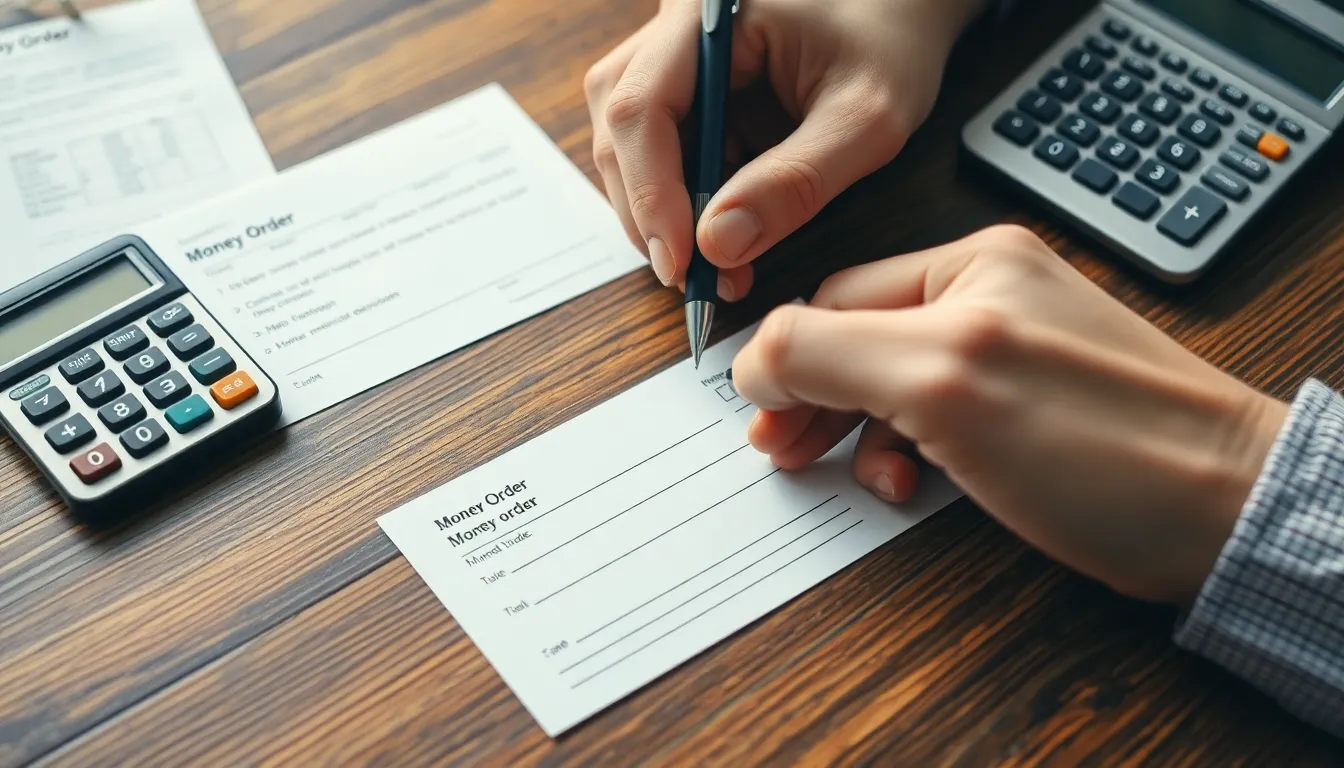Filling out a money order might seem as daunting as deciphering hieroglyphics, but it’s really just a straightforward process that can save the day. Whether you’re paying rent, settling a bill, or gifting someone cash without the awkwardness of handing over crumpled bills, knowing how to fill a money order is a skill worth having.
Table of Contents
ToggleUnderstanding Money Orders
Money orders serve as a secure alternative to cash or personal checks. They operate like prepaid checks, providing a guaranteed method of payment for various transactions.
What Is a Money Order?
A money order is a payment instrument issued by banks, post offices, and other authorized entities. It guarantees the recipient receives the specified amount, making it a reliable option for payments. Individuals often use money orders for transactions where personal checks are not accepted. Unlike checks, money orders do not require a bank account, giving access to those without traditional banking services.
Benefits of Using Money Orders
Using money orders offers several advantages. First, they’re widely accepted, making them suitable for paying bills, rent, or making purchases. Second, money orders provide a level of security that cash doesn’t. They can’t be easily lost or stolen, and they can often be replaced if lost. Additionally, money orders allow for easier budgeting since they require upfront payment. Lastly, they’re a way to send money without revealing personal bank information, maintaining privacy in transactions.
Steps on How to Fill a Money Order

Filling out a money order involves several straightforward steps. Each step ensures accuracy and compliance.
Gather Necessary Information
Collect essential details before starting. This includes the name of the recipient, their address, and the purpose of the payment. Ensure you have the exact amount to pay. Valid identification might be required if purchasing the money order at a bank or post office. Verification helps in the accurate processing of payments.
Fill in the Payee Details
Enter the recipient’s name in the designated area. It’s critical the name matches the person or entity who will cash the money order. Also, include the recipient’s address, which aids in confirming identity. Some money orders provide space for “Payable to,” indicating who receives the payment. Completing these fields accurately prevents any issues when the money order is cashed.
Include Your Information
Provide your details in the sender section. Start with your name and physical address to ensure proper identification. The sender information establishes accountability and clarity for the transaction. This step becomes crucial if there are questions about the payment in the future. Double-check all entries for accuracy to mitigate any complications.
Write the Amount
Clearly state the payment amount on the money order. This amount should match what you intend to send. Write the figure in both numbers and words, ensuring clarity. Also, use a permanent pen to prevent alterations. Miswriting the amount could lead to significant issues when processing the order. Accuracy in this section is key to a successful transaction.
Sign the Money Order
The final step involves signing the money order in the specified space. Your signature confirms authorization of the transaction. It serves as a security measure against fraud or unauthorized alterations. Some money orders require additional details alongside your signature, so always check. Signing appropriately completes the process and ensures the order is valid.
Common Mistakes to Avoid
Filling out a money order requires attention to detail. Common errors can lead to complications.
Overlooking Required Details
Failing to include necessary information can cause problems when cashing the money order. Owners must fill in the recipient’s full name and address accurately. Missing either can result in delays or rejection at cashing locations. Read and double-check the instructions on the money order for specific requirements. Each issuer might have unique stipulations to follow.
Incorrect Amounts
Writing erroneous amounts leads to confusion and failure to process the payment. Listing the payment in numbers must match the written amount. For example, writing $50 in figures and fifty dollars in words should align seamlessly. Any discrepancy triggers concerns during cashing. Watch for numerical miscalculations that can occur easily if not careful.
Forgetting to Keep a Receipt
Not retaining the receipt creates challenges when tracking the transaction. Receipt serves as proof of payment and essential for dispute resolution. Keeping it in a safe place ensures accountability and assists if any issues arise. Therefore, it’s wise to store the receipt alongside other important financial documents.
Filling out a money order is a straightforward process that can provide peace of mind in various financial situations. By following the outlined steps and avoiding common pitfalls, individuals can ensure their transactions are completed smoothly and securely.
Understanding the importance of accuracy and attention to detail not only facilitates the process but also enhances the reliability of using money orders. With their wide acceptance and security features, money orders are a valuable tool for managing payments.
Armed with this knowledge, anyone can confidently navigate the world of money orders, making it easier to handle payments without the worries associated with cash or personal checks.





